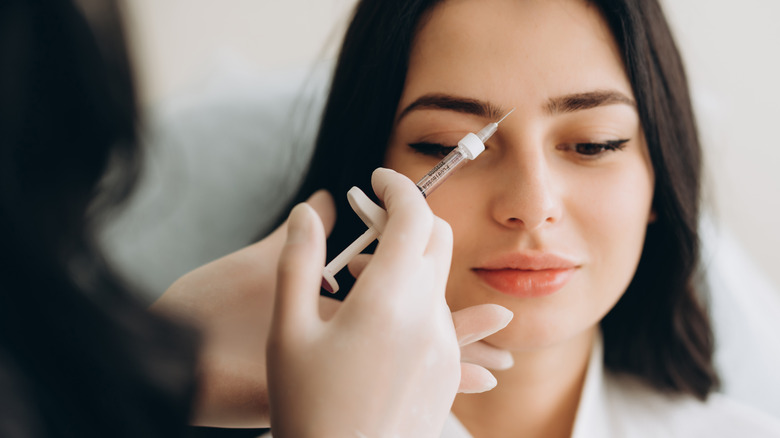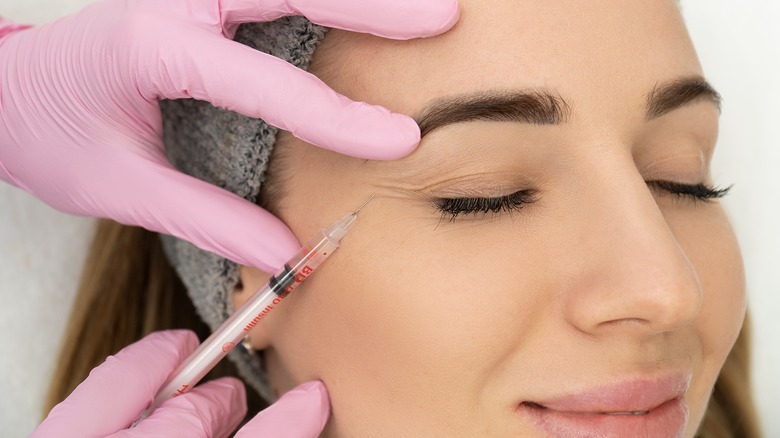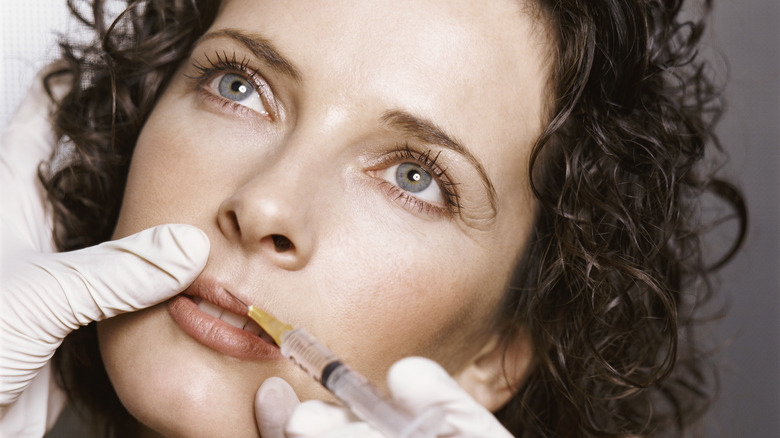Tear Trough Filler Vs. Botox: The Difference Between The Injectables
Here's the deal: despite the undeniable and ever-growing popularity of both filler and Botox, people tend to be totally in the dark about what they are and what they do. Sometimes they are even mistaken for being the same thing.
The truth? They're nothing alike, and the two procedures are not interchangeable. Although they often go hand in hand, they target entirely different areas of concern. Odds are, if you get filler, you also get Botox (and vice versa). But you don't actually need to! It all depends on your individual and particular concerns and aesthetic desires. Each patient finds that one or the other, or both, will enhance their features in uniquely beneficial ways. This is why research is so important before deciding to undergo any procedures, as non-invasive as they may be advertised to be. So sit back, relax, and let us do part of that research for you.
What is Botox?
The (in)famous Botox, beloved and loathed in equal measure. Some swear by it, and some shun it and its use. But what is it? Well, this wonder procedure seemingly does it all. The Mayo Clinic describes the injectable as using a toxin called onobotulinumtoxinA (no, we can't pronounce it either). The injection essentially paralyzes areas of the muscles on the face to prevent the movements and creasing that cause fine lines and wrinkles. Trading the ability to frown for fewer lines on the face? Sounds pretty good to us.
And that's not all it does. While its main and most common use is cosmetic, Botox is also used to treat medical conditions, such as hyperhidrosis (overactive sweat glands), neck spasms, chronic migraines, and bruxism (via Premier Neurology). Rumor is, celebrities even go so far as to inject Botox in their feet to numb the pain of wearing high heels for hours on end at red-carpet events.
Botox is also increasingly popular as a preventative measure. Pure Aesthetics recommends getting Botox as soon as you start seeing fine lines develop, so you can prevent these from settling and becoming deeper with the passing of time. Receiving these injections ahead of time will prevent harsher lines and wrinkles, slowing the skin's aging process.
What is tear trough filler?
Filler, on the other hand, is meant to add volume where it is lacking. Injectable dermal fillers are a popular choice among people of all age groups for varying reasons — facial fat loss due to aging, a desire for plumper lips, and more. Fillers are also used to sculpt, achieving the highly sought-after chiseled jaw and sharp cheekbone combo that celebrities often possess.
One increasingly common use of filler these days is for the tear trough (also known as the undereye). When people experience a lack or loss of volume in this area, caused by aging or genetics, it might result in unflattering shadows and a perpetually tired look. While this is entirely normal and many people embrace this look, many others consider that a sunken tear trough is unflattering. For the latter, filler is certainly a valid choice to consider.
Adding volume under the eye often results in a brightened space above the cheeks and below the eyes, as well as a plumper and generally more youthful appearance. Results for this procedure last up to 12 months. Those who are interested in the procedure should keep in mind the delicate nature of the area, and the potential dangers that may come with getting injections below the eyes. Juvederm is so far the only FDA-approved brand of filler for this particular area of the face (via Healthline).
Let's talk prices
We truly understand the instinct to scroll through a clinic's before and after photos on Instagram and go, "Take all my money!" Before you do that, here's a look at what you might be spending on these procedures. Beauty isn't cheap!
If you're noticing your days out in the sun are catching up to you and showing you where those wrinkles will settle later in life, you're probably considering Botox. Prices for this injectable vary from specialist to specialist, but GoodRx reports that one unit of Botox costs $10 to $15. On average, treatment might require up to 40 units, landing the final cost of this procedure at around $600.
If, on the other hand, you think your face would benefit from filler, here's what you might spend. Cost varies, but the American Society of Plastic Surgeons prices hyaluronic acid fillers, such as Juvederm, at $684 per syringe.
Which option is right for me?
First, let us stress that beauty is subjective. Taste differs, and self-perception fluctuates with the passing of time and the cycling of beauty trends. Changing your appearance (even if temporarily) is a personal choice and one that should not be taken lightly. Consider any body and face alteration carefully, and always consult a professional.
Candidates for cosmetic Botox injections include people in their mid-20s to early 30s seeking to prevent fine lines from settling in, people with established fine lines who don't want these to deepen further, and people who want to control conditions like hyperhidrosis.
You might consider filler if your concern lies in a lack of volume. The minimally invasive procedure will help you regain a fuller look anywhere you want, including the tear trough area. Pouty lips, more defined cheekbones, a precisely delineated jaw, and even a straighter nose are all possible with filler.
Who do I go to?
When it comes to Botox, fillers, and any other cosmetic procedures out there, you should always consult a professional with practice and experience to back their expertise. Be candid about your personal desires and concerns regarding your face, and allow their advice to guide your decisions (but don't let them influence you into getting something you don't truly want). Do lots of research beforehand and ask your professional any questions that might make you more comfortable with the procedures you're interested in. Some recommend seeking out specialized professionals to do certain procedures, especially with more delicate areas like the tear trough. This means doing extra digging to hopefully land on someone who specializes in performing this particular procedure, rather than someone with limited experience.
To look for a good surgeon or certified practitioner nearby, Google reviews are your best bet. We're also big proponents of word-of-mouth — ask your friends who they go to! Chances are that if your friend trusts someone with their face, you'll trust them too. If you consider either of these injections, we wish you a happy research journey!





